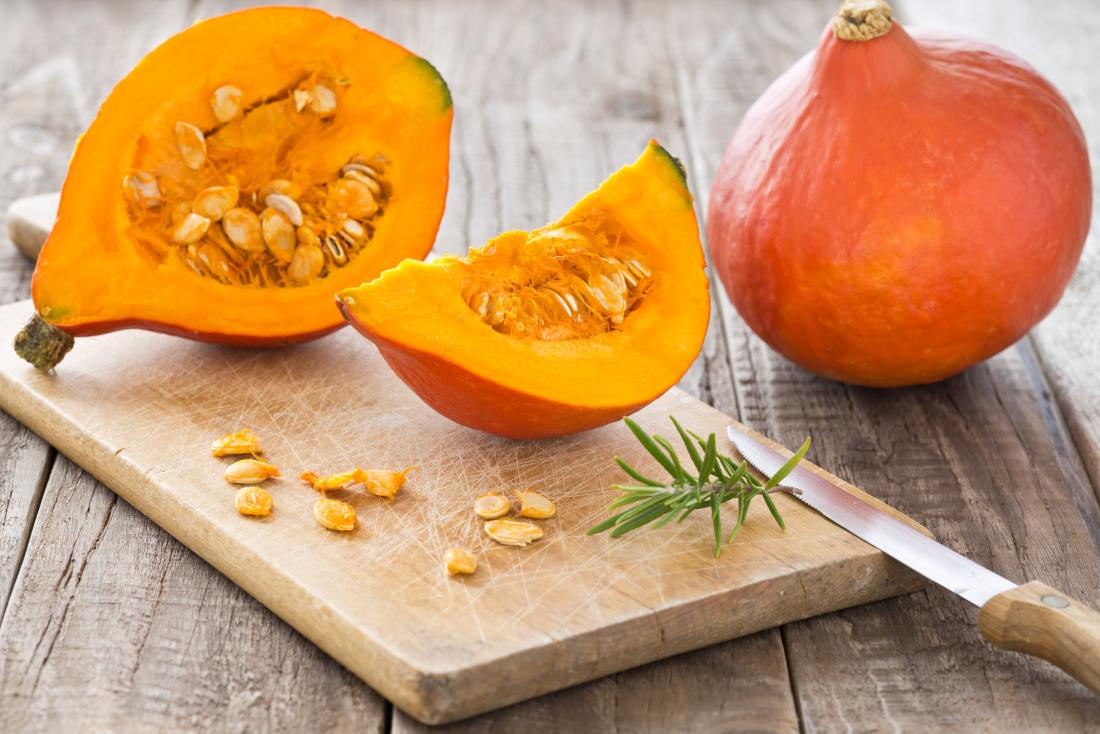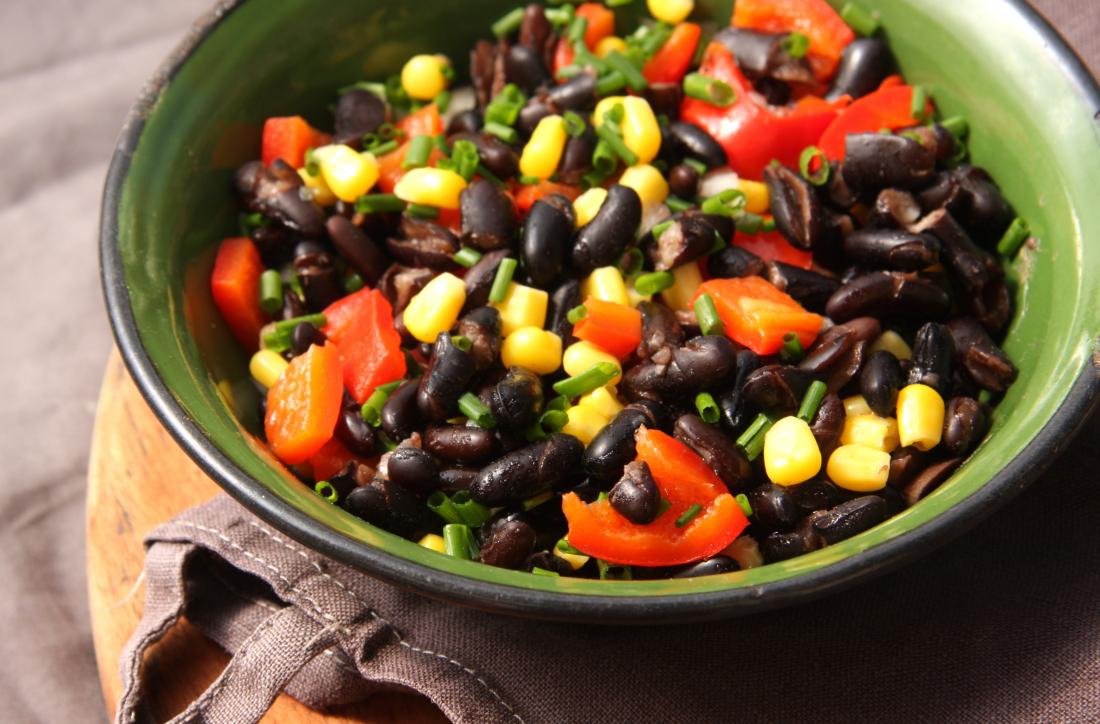A person with diabetes can eat a balanced, healthful diet without giving up on the foods they enjoy. The key tends to be moderation and knowing which foods help to maintain healthful blood sugar levels.
In this article, we identify some of the best foods for stabilizing insulin and blood sugar levels. We also look at foods a person should avoid or eat only in moderation.
However, it is important for a person with diabetes to speak to a doctor or dietician before making any significant dietary changes.
Non-starchy vegetables

Squash is a non-starchy vegetable suitable for people with diabetes.
These vegetables are an excellent addition to almost any diet, including those suitable for people with diabetes.
There are two main types of vegetables: starchy and non-starchy. Starchy vegetables are rich in carbohydrates, which can raise a person’s blood sugar levels.
The American Diabetes Association recommend eating a minimum of 3–5 servings of non-starchy vegetables each day. They define a serving as:
- half a cup of cooked vegetables
- 1 cup of uncooked vegetables
Some examples of non-starchy vegetables include:
- carrots
- bean sprouts
- baby corn
- cucumber
- squash
- cabbage
- salad greens, such as arugula, spinach, and lettuce
The vegetables can be frozen, canned, or fresh. If a person is not eating them raw, the best way to prepare the vegetables is by roasting or steaming them with minimal added fat or salt.
Also, pay attention to the types of preservatives in prepackaged vegetables. Check ingredients lists for added salt, sugar, fats, and oils, for example.
Whole-grain foods
Whole grains offer a more healthful alternative to highly processed or refined grains.
The main difference is that whole grains have more vitamins and minerals, whereas refined grains only include the starchy part of the grain, which contains fewer nutrients.
Look for products with 100 percent whole-grain ingredients. Some popular examples include:
- crackers
- breads
- popcorn
- brown rice
- pasta
- cereals
- quinoa
- whole oats or oatmeal
- cornmeal
A person can incorporate whole-grain products into meals or snacks to help control blood sugar levels.
Healthful fats

Healthful fats are an essential part of a balanced diet.
Healthful fats may be monounsaturated or polyunsaturated, and omega-3s are one example. Trans and saturated fats are unhealthful.
Eating more healthful fats and fewer unhealthful fats may help lower levels of harmful cholesterol, improve heart health, and provide better blood sugar control.
Many foods are rich in unsaturated fats. Some examples include:
- avocados
- olive oil
- nuts and seeds
- canola oil
A 2013 review suggests that avocados offer a variety of health benefits. They may improve cardiovascular health, and promote weight management and healthy aging. However, the authors noted that supporting some of these conclusions will require more research.
Avocados are great in salads and dips, and they can even add creaminess to deserts.
Also, try replacing butter with olive oil in recipes.
Fatty fish
Fatty fish, such as salmon, tend to have high amounts of protein and omega-3 fatty acids. Protein does not impact blood sugar. It is filling, and it provides essential nutrients to help the body grow and repair.
To see some benefits, try adding fatty fish to the diet on at least one day per week.
As with other foods, the preparation is key. Avoid sugary marinades and try grilling instead of frying the fish.
Cacao
Cacao is a bean-like seed. Grinding these seeds produces a powder that is bitter and full of nutrients, and manufacturers use it to create chocolate.
Cacao contains the flavonoid epicatechin, which may help regulate blood sugar levels. A 2017 review pointed to the findings of several small studies, which suggest that cacao may help slow the progression of type 2 diabetes and reduce insulin resistance.
An easy way to add cacao to the diet is by eating dark chocolate in moderation. Dark chocolate contains more cacao than milk chocolate.
When choosing between brands, it is essential to check the sugar contents. While dark chocolate tends to contain less sugar than milk chocolate, many well-known manufacturers add more sugar.
People with diabetes should limit their chocolate intake to one or two small squares of dark chocolate per day.
High-protein foods

Black beans are high in protein and fiber.
Protein is an essential nutrient in meats, fish, and certain vegetables, such as nuts, beans, and legumes.
Research suggests that protein does not increase blood sugar levels, and it can help a person feel fuller for longer.
However, a 2017 study found that a high protein intake can have mixed results for people with type 2 diabetes.
Earlier short-term studies indicated that a high-protein diet may decrease blood sugar levels.
However, in the longer term, a diet rich in animal protein may increase the risk of developing type 2 diabetes, while a diet rich in plant protein may modestly decrease this risk.
A person with diabetes should favor foods with high protein but low animal fat contents. Some examples include:
- fish, such as salmon, mackerel, and tuna
- poultry, such as chicken and turkey
- beans, such as lima, kidney, or black beans
- lentils
- nuts and seeds
- soybeans and tofu
A person can easily add protein that contains little animal fat to a meal. For example, beans are an excellent addition to salads, as are roasted chicken breasts.
Foods to avoid
There are several foods that a person with diabetes should either avoid or eat only in moderation.
The following can cause blood sugar and insulin levels to spike:
- sugary drinks, such as soda, juices, and sports drinks
- processed foods and baked goods, which often contain trans fats
- white rice, bread, and pasta
- breakfast cereals with added sugar
- yogurts with added sugar
- honey and maple syrup
- flavored, sugary coffee drinks
- french fries
- dried fruit, which often has added sugar
Benefits of stabilizing insulin and blood sugar
Diabetes can cause a range of symptoms and health issues. Controlling insulin and blood sugar levels can have a range of benefits, including:
- improved mood
- reduced fatigue
- increased energy levels
- improved brain and blood vessel health
- reduced risk of complications, such as nerve and kidney damage
Summary
To stay healthy, people with diabetes need to control their blood sugar and insulin levels. In addition to medications, lifestyle and dietary changes are an essential part of diabetes management.
By eating a balanced diet, and avoiding foods rich in sugar, simple carbohydrates, and unhealthful fats, a person can better control their blood sugar and insulin levels.
